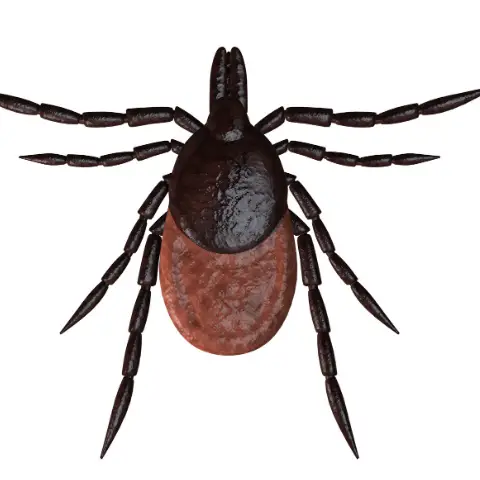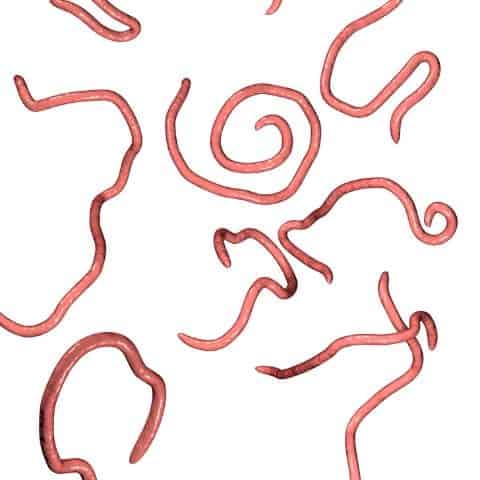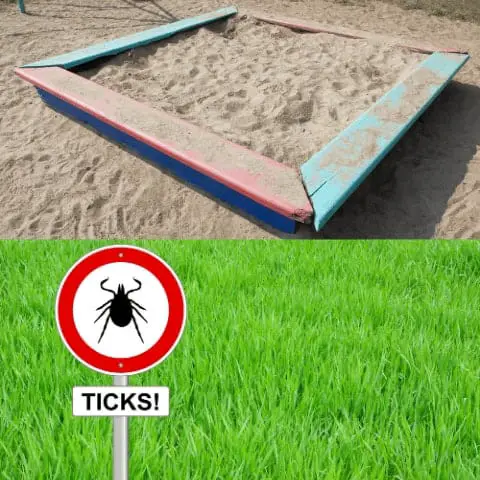Every time I hear about ticks, I remember an event that has stuck in my memory. About twenty years ago, I took my son, then just a toddler, for a playdate at my friend’s house. The family had a nice sandbox in their garden, and it seemed a good idea to put the kids there to play.
A short time later I noticed that a considerable amount of tiny black insects emerged from the sand and crawled in the direction of the children. They were young ticks and what struck me is that they KNEW where to go. They were like a small army marching towards their prize.
Needless to say, I lifted my son and from that moment on, my only thought was how to get out of there as soon as possible. Since that day, I have always avoided leaving my son in park sandboxes without my supervision.
Even thou I grew up in the countryside, and have always had dogs and other animals, I was used to seeing a few ticks here and there, but never in such high number.
Why Are Ticks In The Sandbox?
Ticks live almost everywhere and thrive where they can find a good source of food. They usually live in uncultivated meadows, on the edges of the paths, camouflaged among the tall grass in passage areas. Also lately, they have been found in the vicinity of urban centers and it is likely that they were brought there by pets.
A sandbox is an ideal place for ticks to live in, since they love a place where they can hide and stay cool, and these are often the conditions in which we keep the sandbox: in shady and breezy areas.
Ticks are attracted to the CO2 people exhale. They also sense body heat and the lactic acid that comes from sweating. If the sandbox is visited by children, it becomes tick paradise!
To feed, they attach to the host’s skin, bite it, and insert the rostrum using an anesthetic; then they slowly begin to suck blood. The bite is not painful and it’s hardly noticed.
How Can We Prevent Ticks From Crawling Into The Sandbox?
By following these simple rules you can prevent the presence of ticks in your sandbox:
- Keep the sandbox covered
Only buy sandboxes with adequate coverage so that you can cover them when not in use. Even if you build it yourself, don’t forget this important detail. Create a lid that fits perfectly into the sandbox.
The cover will protect the sandbox from the rain, parasites, and from excrements that cats and other animals drop during their “visits” to the sandbox.
- Add cinnamon to the sand
Once you have purchased the sand for your sandbox, mix it with cinnamon. Cinnamon is a natural insect repellent but is safe to use around children. This little trick will make the sand an inhospitable place for ticks and other critters which will prefer to migrate elsewhere. Just sprinkle some on the sand and mix well. Do not overdo it because large doses of cinnamon could lead to respiratory problems. Repeat this process every four to six months since its effect may lessen after a while.
- Turn the sand regularly
Turning the sand regularly will keep it cool and disturb the insects that lurk in the bottom of the sandbox. Frequent shaking of the sand will deter insects from creating their own habitat in your sandbox.
- Keep the sandbox area clean and free of weeds
If you placed the sandbox on the lawn or in the vicinity of tall grass, remember that it may be an entry point for ticks and other insects. Remember that ticks climb on to the grass and then wait for the victim to pass by. As a matter of fact, ticks cannot jump, nor can they fly. They wait in a position known as “questing”: they hold onto leaves and grass by their third and fourth pair of legs waiting to climb on to the host with their first pair of legs outstretched.
Remove all weeds around your sandbox or place it on a smooth surface such as a cemented area that is inhospitable to insects.
- Don’t let your kids eat in the sandbox
We all know that kids are messy, and no matter how attentive you are, they might spill and drop food into the sand. The food will rot or even worse, attract unwanted bugs.
- Throw away the old sand and refresh it with new sand
It is advisable to change the sand regularly and replace it with a fresh batch. This will prevent the ticks (and other bugs) from settling down and feeling too comfortable in your sandbox.
What to do if you find a tick on your body?
The tick bite does not cause problems in itself, but these animals can be carriers of bacterial and viral diseases such as Lyme disease, tick-borne encephalitis (TBE), to name just a few.

First, make sure you are dealing with a tick.
To recognize them, know that ticks are arthropods, in the class of Arachnids, the same as spiders, mites, and scorpions and this means that they have eight legs. If the insect on your body is black but only has six legs it is not a tick. The size of ticks varies from a few millimeters to about 1 centimeter according to the species and the stage of development. The head cannot be distinguished from the rest of their “drop-shaped” body.
Ticks usually remain attached to the host for a period ranging between 2 and 7 days and then drop off spontaneously. However, it is important that they are removed as soon as they are identified. This is to avoid the first regurgitation (which occurs after about 5-7 hours from the bite and which would lead to the passage of infections).
In removing the tick, you must be careful and avoid the risk of breaking it. Make sure to remove the ticks head from the skin. The way to remove a tick correctly is to grasp it with tweezers (special tweezers for ticks are available on the market) and rotate it, like unscrewing a cork. If you are unsure, contact your doctor.
Once you remove the tick, the area must be disinfected. A red dot-like that of a mosquito bite will remain on the skin and will disappear in a couple of days. Make a note on the calendar of the day you removed the tick and monitor the area for a month. During this time, that part of the skin is sensitive and could become more easily infected.
It is advisable to keep the tick in a bottle with 70% alcohol to study it in case of serious symptoms.
Keep Ticks Away From Your Yard Naturally
As with all things, prevention is better (and easier) than the cure. Luckily, nature helps us in the fight against ticks through natural products that do not harm humans nor pets. Just to name a few:
- Beneficial Nematodes:
Nowadays, it is possible to apply biological methods for pest control. If you have a tick infestation in your garden, you might consider applying beneficial nematodes to end their reproducing cycle. Beneficial nematodes effectively reduce unwanted parasites in the garden in a completely organic and safe way for humans and pets.
Nematodes are microscopic parasitic worms and they can kill over 100 kinds of pests from the insect family.
Some act like cruisers, meaning that they roam around the soil looking for their prey, which ideally doesn’t move much, like larvae. Others will stay sedentary and wait to ambush their victims as they pass by.

Their way of hunting is a bit creepy but very effective: they enter the insect body through their openings (the anus, the mouth) and release a bacteria that kills the host within 48 hours. The infective juvenile nematodes then stay inside the body of the dead host to feed on it, develop and reproduce. As a matter of fact, several generations may live and reproduce inside the dead host, till the source of food ends.
The nematodes of the genus Steinernema Feltiae and Heterorhabditis Bacteriophora are the ones used to kill ticks. They will attack the ticks when they are in their larva stage.
If you want to know more about beneficial nematodes and how to apply them, you can read this article.
2. Organic Insecticidal spray
You might consider following up the nematode treatments with insecticidal sprays to optimize the control of the tick population. There are products on the market that are based on botanical oil* and kill ticks by suffocating them. The insecticide should be sprayed directly on the plant foliage, where ticks nest. It is advisable to repeat the operation every three weeks, especially during warm seasons.
* Botanical oils are based on natural elements, they are lipids extracted from plant seeds. The insecticides made with these natural pesticides have minimal to no toxic effect on the environment while they are very efficient at disposing of many types of bugs.
3. Tidy up the garden
As I said before, ticks love to live on weeds, tall grass and anything that can allow them to climb onto their victim. Remove and cut away anything from your garden that may represent a tick’s nest.
It is likely that some wild animals, passing through your property, have left you some ticks as a souvenir. Check your fences and if there are any holes, repair them. If this is not possible, you will need to apply specific wild animal repellents.
4. Use Essential Oils
Create a barrier using essential oils. Cedar oil, for example, is a natural nontoxic repellent for ticks and other insects. This can be sprayed directly on clothing and skin. It is safe for use on humans and pets. Cedar oil has the power to kill ticks and the spray may be purchased online and in most pet stores.

You can make your homemade Tick repellent spray mixing the following ingredients and pouring them into a spray bottle:
– few drops of Peppermint essential oil
– few drops of Tea Tree essential oil
– few drops of citronella essential oil
– 1 cup of water
If you prefer to spread it on your skin, you can mix the essential oils with some almond oil or other vegetable oil and apply it directly on the skin.
Other effective essential oils that ticks cannot stand are Eucalyptus oil and Neem oil.
You can mix them with water and spray directly on yourself and on your pets before heading outdoors.
Do not use essential oils on cats.
5. Apple Cider Vinegar
Apple cider vinegar has multiple uses and one of them is as an insecticide. Vinegar is even safe to use directly on your skin. Here is a recipe for killing ticks.
Mix the juice of half a lemon, 2 tbsp of vinegar, 1 tsp of dish soap, 1 1/2 cups of water.
You can also add a few drops of Neem Oil.
Wanna know more about the properties of vinegar and its many uses in the home and in the garden? Check this article.
10 Plants that repel ticks
Did you know that even ticks have their preferences when it comes to plants?
When planning the layout of your garden, you might want to pay some attention to the plants that can help you in warding off certain parasites such as ticks.
There are plants that have a pleasant scent for humans but which are highly unpleasant to countless insects, including ticks. Just like the essential oils, this is a list of plants that ticks hate:
- Lavender
- Peppermint
- Marigolds
- Garlic
- PennyRoyal
- Sage
- Beautyberry
- Eucalyptus
- Rosemary
- Artemisia
What Are the plants that attract ticks?
There are plants that instead of repelling ticks, have the power to attract them or at least provide them with an optimal habitat where they can reproduce and wait for the next victim. This is the case of the Japanese Barberry, a beautiful thick bush, which as the name suggests comes from Japan. This plant is considered an invasive and aggressive bush, so much so that it was banned in the state of Massachusetts in 2009!
The reason it attracts ticks is that the base of the shrub keeps cool and moist which is an ideal home for them.
I hope that this article will help you in solving your tick problem!
Some of the links above are affiliate links, meaning, at no additional cost to you, I will earn a commission if you click through and make a purchase.

